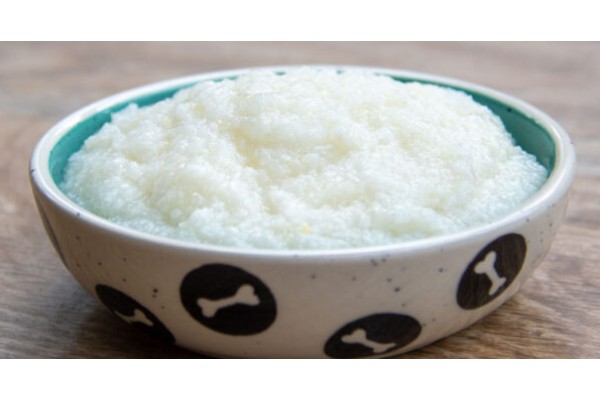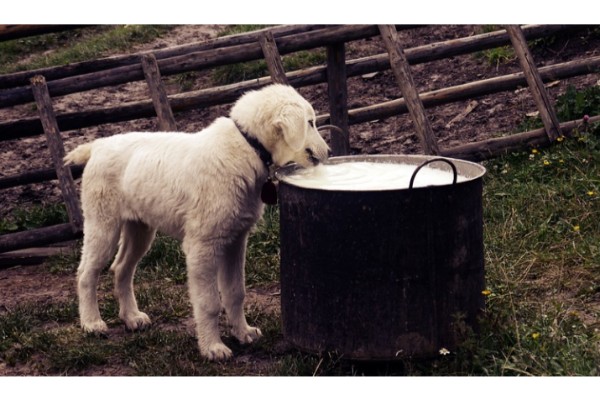The answer is yes, grits are safe for dogs to eat. Hominy or stone-ground corn, which are both ingredients that are safe for your dog to eat, are boiled to create grits, as they are now commonly known.
However, Grits are made from corn, which some dogs find difficult to digest and to which they may also be allergic. Grits shouldn’t be a problem for the majority of dogs, but because they are high in carbohydrates and low in protein, they only provide empty calories rather than nutrition.
Table of Contents
Can Dogs Eat Grits?
3 Health Benefits Of Feeding Grits To Dogs
Dogs might benefit from small servings of grits. Consider these potential health benefits of grits:
Boosted immunity: When dogs eat hominy (corn), they take in folate and other B-complex vitamins, which may help your dog’s body fight free radicals. In adult dogs, this might slow down the rate of cellular aging. Leucine and arginine, two amino acids that may be important for cellular health, are also found in grits.
Improved circulatory system: Grits are rich in iron, which your dog’s body needs to produce red blood cells and maintain a healthy circulatory system. Since excessive grits in a dog’s diet could cause their blood sugar levels to spike and have adverse health effects, moderation is key to obtaining these nutritional advantages.
Supported eye health: Grits contain lutein and zeaxanthin, two antioxidants that may shield the eyes of your pet from free radical damage and help them keep their vision as they age.
3 Health Risks Of Feeding Grits To Dogs
Even though corn is the main ingredient in grits, not all grits are necessarily safe for dogs. Dog owners who are thinking about adding grits to their dog’s food should take into account the potential health risks. Negative outcomes include:
Gastrointestinal upset: A dog’s digestive system could suffer greatly from unsafe seasonings on grits. Additionally, a corn allergy in your dog could cause stomach discomfort. Anorexia, vomiting, and diarrhea are typical signs of gastrointestinal upset.
Obesity: Regularly eating too many carbohydrates may cause your pet to gain weight quickly. Risky conditions like diabetes and pancreatitis are more likely to develop in obese dogs.
Sodium-ion poisoning: Grits are typically a salty dish, and too much salt can be harmful to your pet. Ideally, give your dog no more than one small spoonful of plain grits per serving. After that, keep a close eye out for any strange behavior. Lethargy, thirst, and frequent urination are typical signs of salt poisoning. In severe cases, tremors or seizures may also appear.

How Can I Feed My Dog Grits Safely?
Before feeding your dog grits, they should be soaked and boiled. Your dog should not eat dry, unsoaked grits because they may upset its stomach.
While you might like to season your grits with butter and other ingredients, your dog shouldn’t. You could, however, top it with a small amount of cheese.
You shouldn’t need to do much cajoling to get your dog to eat this food because dogs like the taste of grits.
Other Varieties & Related Foods:
Corn Grits
Dogs should only eat small amounts of corn grits. If your dog has a corn allergy, keep corn grits out of reach.
There is a secure way to feed your dog grits. Serve it cooked and unseasoned, and only give them a small portion.
Grain Grits
The stomach of a dog cannot digest whole grains the way our stomachs can. If you want to share some grits with your dog, it is best to give him a small serving that has been thoroughly ground.
Hominy Grits
Hominy, which is corn that has been treated with lime, is frequently used to make grits. Its safety for your dog is unaffected by this treatment.
Your dog is safe to eat cooked, unseasoned hominy grits in very small amounts.
Instant Grits
Your dog won’t be harmed by instant grits. A small amount won’t harm your dog because they are not toxic. Your dog is likely to overindulge and eat too much of this because it is so simple to digest.
Once they’ve had their fill of corn and grits, your dog won’t be interested in eating other nutritious foods.
Grits consumption in excess amounts or on a regular basis may result in weight gain, obesity, and other related health issues.
White Grits
White grits should only be consumed in moderation by dogs on occasion. White grits shouldn’t be given to dogs frequently or in large quantities because they are unnutritious.
Yellow Grits
Yellow corn is used to make yellow grits. Yellow grits are empty calories, so consuming an excessive amount will make your dog sated without providing adequate nutrition. This is what causes dogs to gain weight and develop diabetes, heart disease, and other conditions.
Dry Grits
Dry grits are not at all recommended for canines. If they consume raw grits, they will require more water to aid in digestion. Grits that are dry or uncooked are not dangerous. If you simply give them more water, your dog should be fine.
Cooked Grits
A small serving of cooked grits is safe for dogs to eat. If you plan to give your dog some grits, cook them plainly when you make them. Don’t add anything to the grits. Your dog will remain safer as a result.
Fried Grits
Anything fried, including grits, should never be given to your dog. Foods that are fried cause weight gain and heart disease.
Just be aware of your dog if they happen to consume fried grits. It should be no problem for them. If the dog regularly consumes large quantities of fried food, that is the main cause for concern.
Plain Grits
An insignificant serving of plain, cooked grits is the kind of grits that your dog can safely consume. Given that dogs shouldn’t consume grits on a regular basis, this should only occur rarely.
Grits And Butter
Butter, which primarily consists of saturated fat, has no positive effects on health. A small amount of butter is safe to eat, but consuming it frequently and in excess may increase your dog’s risk of developing heart disease.
It’s best to avoid giving grits and butter to your dog.
Grits and Eggs
A dog’s need for essential amino acids are met by eggs, which are high in protein. It’s okay to give your dog eggs. When it happens, a small serving of grits with plenty of eggs is a treat that is safe for your dog.
Feeding your dog eggs rather than grits is safer.
Cheese Grits
Dogs shouldn’t consume cheese grits. Since cheese contains a lot of saturated fats and some dogs are lactose intolerant.
A small serving of plain or unseasoned grits with cheese won’t harm your dog. You shouldn’t give it to them frequently or in large amounts.
Sugar Grits
Don’t feed sugar grits to your dog. Dogs should avoid ingredients like sugar. It can cause weight gain and make it challenging to control blood sugar levels. Dogs who consume a lot of sugar have a higher risk of developing diabetes.

In Conclusion
Can dogs eat grits, is the final determination? Yes, but only in very small doses and infrequently. However, just because grits are safe for dogs doesn’t mean they’re good for them. Make sure to prepare them plainly without any additional ingredients to make sure they are dog-friendly.
